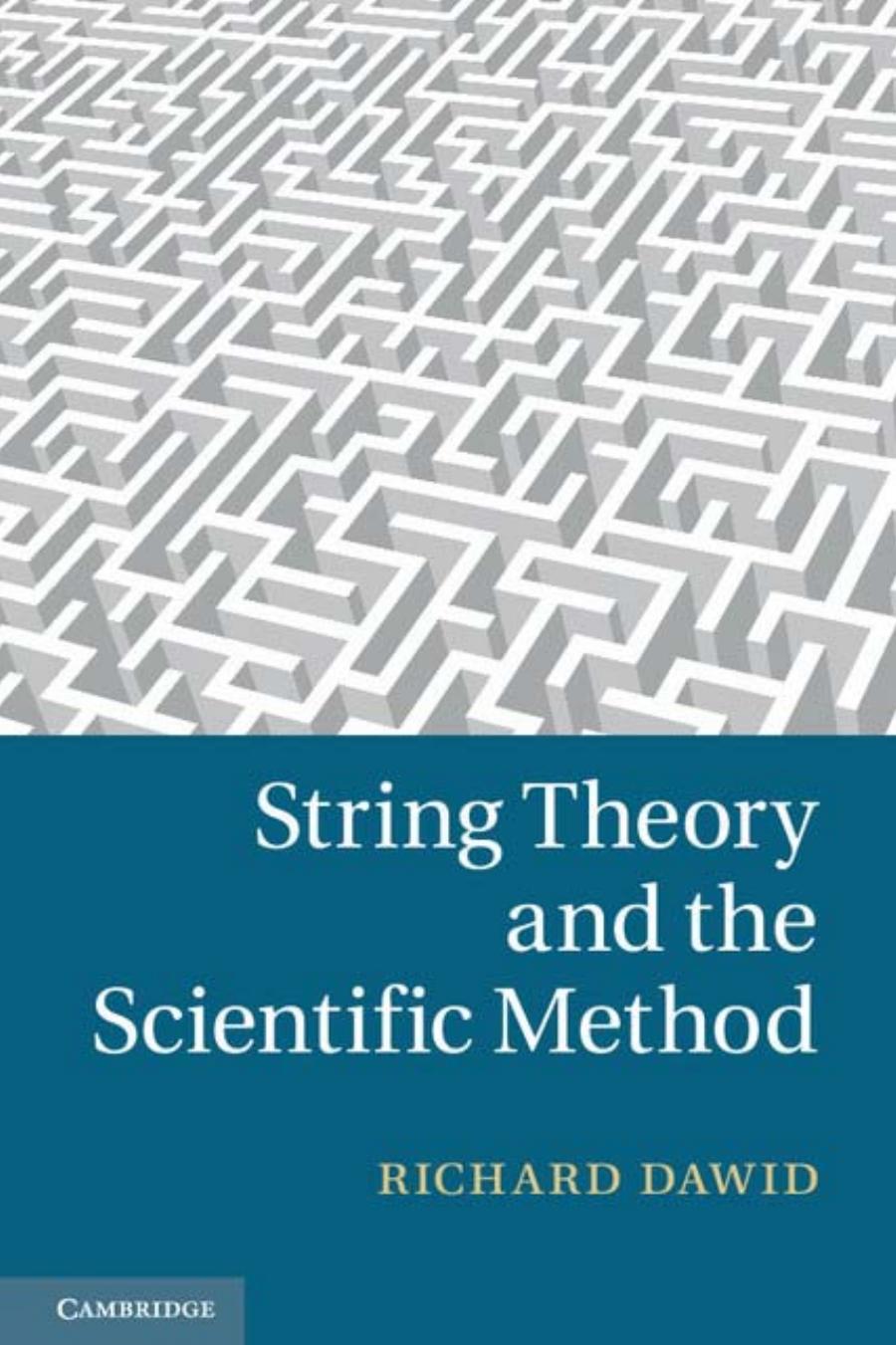String Theory and the Scientific Method by Richard Dawid

Author:Richard Dawid [Dawid]
Language: eng
Format: epub, pdf
Publisher: Cambridge University Press
Published: 2015-02-26T00:00:00+00:00
5.2 The question of microphysical objects
It has been emphasized already in Chapter 1 that assessments of scientific underdetermination always played an informal role as a basis for assessing the chances of success for empirically unconfirmed theories. Individual scientists at times put a lot of emphasis on non-empirical methods of theory assessment that can be framed in terms of implicit assessments of limitations to scientific underdetermination.
The best-known example in case is Einsteinâs trust in his theory of general relativity. After the theory had been confirmed empirically by Eddingtonâs measurement of starlight bending in 1919, Einstein famously remarked that he had been fully convinced of the theoryâs validity all along: general relativity just was too beautiful to be false. Translating Einsteinâs remark into more specific terms, he was conveying that (1) he considered it highly unlikely that there existed more than one theory that was in agreement with the data available at the time he completed his theory of general relativity and was as beautiful as general relativity and (2) he considered it highly unlikely as well that, if such a beautiful theory existed, a less beautiful one would be correct and the beautiful one would be false. Step (1) of the argument, reconstructed in this way, represents a straightforward example of an assessment of scientific underdetermination with regard to scientific theories which satisfy the additional criterion of beauty.
Despite strong cases of the above kind, however, the canonical paradigm of theory assessment understands such considerations as subjective assessments which do not generate genuine scientific knowledge about the external world. Earlier stages of this book have suggested that this canonical paradigm of theory assessment is seriously at odds with the way empirically unconfirmed theories and claims are actually assessed in contemporary fundamental physics. A little later, it will be demonstrated that this is true not just with respect to speculative theories like string theory but also within the context of well-established standard model physics.
I want to pursue a more far-reaching approach, however. I will argue that assessments of scientific underdetermination play a crucial and systematic role already in a context where one would not expect it at first glance: they are built into the overall understanding of what it means to acquire empirical confirmation of theoretical scientific claims. I will argue for this claim by discussing two specific contexts. In the present section, I will have a look at the emergence and confirmation of empirically supported atomism in the later part of the nineteenth and the first decade of the twentieth century. Section 5.2 will then analyze present-day empirically confirmed high energy physics. Following that analysis, I will return to cases of empirically unconfirmed theories and will demonstrate that the roles played by assessments of scientific underdetermination in the two different contexts are remarkably similar.
Atoms and molecules were conjectured for long periods of time without any strategy of direct empirical testing. Rooted in the philosophical atomism of antiquity, the belief in the existence of atoms was widespread among the physicists and chemists of the seventeenth and eighteenth centuries.
Download
String Theory and the Scientific Method by Richard Dawid.pdf
This site does not store any files on its server. We only index and link to content provided by other sites. Please contact the content providers to delete copyright contents if any and email us, we'll remove relevant links or contents immediately.
The Complete Stick Figure Physics Tutorials by Allen Sarah(7264)
Secrets of Antigravity Propulsion: Tesla, UFOs, and Classified Aerospace Technology by Ph.D. Paul A. Laviolette(5237)
Thing Explainer by Randall Munroe(3849)
The River of Consciousness by Oliver Sacks(3498)
The Order of Time by Carlo Rovelli(3097)
How To by Randall Munroe(2969)
A Brief History of Time by Stephen Hawking(2911)
I Live in the Future & Here's How It Works by Nick Bilton(2900)
The Great Unknown by Marcus du Sautoy(2612)
What If?: Serious Scientific Answers to Absurd Hypothetical Questions by Randall Munroe(2589)
Midnight in Chernobyl by Adam Higginbotham(2432)
Blockchain: Ultimate Step By Step Guide To Understanding Blockchain Technology, Bitcoin Creation, and the future of Money (Novice to Expert) by Keizer Söze(2409)
Networks: An Introduction by Newman Mark(2304)
The Meaning of it All by Richard Feynman(2268)
Easy Electronics by Charles Platt(2252)
The Tao of Physics by Fritjof Capra(2204)
Midnight in Chernobyl: The Untold Story of the World's Greatest Nuclear Disaster by Adam Higginbotham(2126)
When by Daniel H Pink(2057)
Introducing Relativity by Bruce Bassett(2048)
